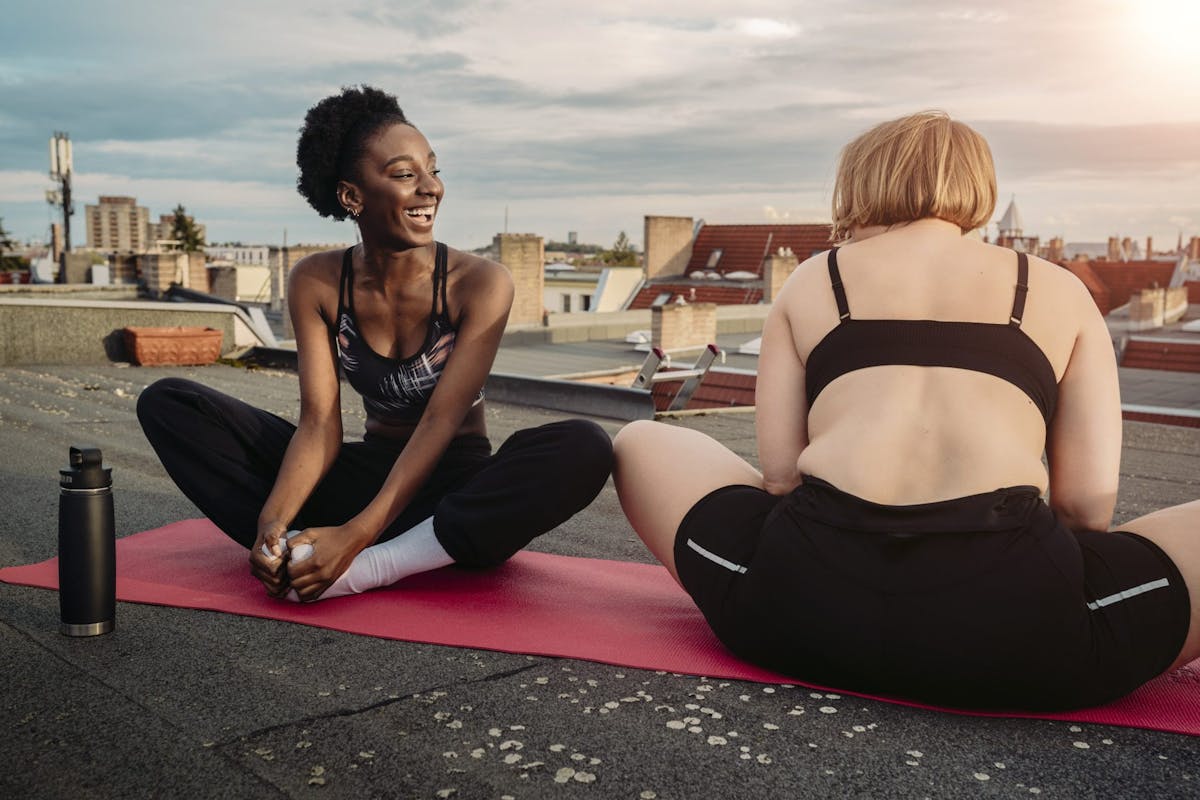POSTED BY CHLOE GRAY FOR WELLBEING

Feel less stressed and sleep better with this simple morning tip.
Getting a decent night’s sleep, maintaining low stress levels and eating well are three fundamental ways to feel good. Despite how obvious that might sound, those three elements are out of reach for so many of us. Research by Formulate Health found that 36% of UK adults struggle to get to sleep, while 74% of people have felt stressed to the point of being overwhelmed, according to the Mental Health Foundation – and that was before the pandemic.
But what if there was a simple way to feel more relaxed and rested? According to Dr Andrew Huberman, tenured Professor of Neurobiology and Ophthalmology at Stanford University School of Medicine, the answer could lie in what you do as soon as you wake up.
“I started walking for an hour every day before breakfast – here’s how it improved everything”
On his podcast, Huberman Lab, Dr Huberman says that “what we do in the waking state determines when we fall asleep, how quickly we fall asleep, whether or not we stay asleep, and how we feel when we wake up the next day.” The key to setting up your body for a good day is getting outside within the first hour of your morning.
It’s all to do with the chemical reactions that happen from being exposed to the sun, namely the rise and fall of cortisol and melatonin. “There’s a healthy rising tide of cortisol that happens early in the day… it makes you feel alert, it makes you feel able to move and want to move throughout your day for work for exercise, school, social relations, etc. But it also sets off a timer in your nervous system that dictates when a different hormone, called melatonin, which makes you sleepy, will be secreted,” Dr Huberman explains.
The levels of these hormones are set by neurons in our eyes which are activated by “a particular quality of light and amount of light,” he says. “When we wake up, our eyes open. If we’re in a dark room, there isn’t enough light to trigger the correct timing of this cortisol and melatonin rhythm. [At day break], when the sun is low in the sky, there’s a particular contrast between yellows and blues, [and that] triggers the activation of the [cortisol]. Once the sun is overhead, the quality of life shifts so that you miss this opportunity to time the cortisol pulse.
“Those of you who are night owls, and insist that you’re a night owl, may very well have those genes that make you want to stay up late and wake up late. But chances are, half of you who think that you’re night owls are just not getting enough sunlight early in the day.”
Should you go to sleep and wake up at the same time every day?
WHY IS MORNING CORTISOL SO IMPORTANT?
“A late shifted cortisol pulse is a consequence and/or a cause of a lot of anxiety disorders and depression,” says Dr Huberman. While “it’s kind of a chicken egg thing” and researchers can’t be sure on cause and effect, those who have cortisol spikes later in the day, rather in the morning, tend to have poorer mental health.
“Bringing that cortisol pulse earlier in your wakeful period has positive benefits, ranging from [lowering] blood pressure to [improving] mental health,” Dr Huberman explains. “In fact, it’s fair to say that light – particularly sunlight – is 1,000 to 10,000 times more effective than say, getting up in darkness and just exercising.”
That’s not to say that working out in a dark studio in the morning won’t help you feel good – exercise is useful for the body’s circadian rhythm but light still remains the most important factor. Combining the pair can be the best way to improve your wakefulness, which might mean taking your training outside for a morning run, or simply walking to your gym rather than getting the bus so you can take in more light.

DOES ANY LIGHT COUNT?
“If you can’t see sunlight because of your environment then you are going to have to opt for artificial light,” says Dr Huberman. “In that case, you’re going to want an artificial light that either simulates sunlight, or has a lot of blue light.”
That doesn’t mean just scrolling through Instagram, as your phone and laptop won’t produce enough brightness to be effective. Instead, Dr Huberman suggests a sunlight stimulators or, even better, “the ring lights that people use for selfies” as these generate a lot of blue light.”
He also goes on to advise that it’s “50 times less effective to view the sunlight through a window” and that being outside with no glasses on is important. But, that doesn’t mean you should put your eyesight at risk in the pursuit of sunlight. “You don’t want to gaze at the sun or refuse to blink,” he says. You shouldn’t “find that your eyes are watering or [you’re] having challenges maintaining looking at this something for a while.”
What is cortisol and how can exercise impact levels of the hormone?
HOW LONG DO YOU NEED TO BE OUTSIDE FOR?
This totally depends on how much light you’re exposed to. For example, if it’s a bright day with no cloud cover you’ll have a lot of “photon light energy arriving on your retina, so it probably only takes 30 to 60 seconds to trigger the central clock and set your cortisol and melatonin rhythms properly.”
However, for those who live in low-light areas or during the UK’s winter, “you probably are not getting enough sunlight in order to set these rhythms, so it will take longer… anywhere from two to 10 minutes of sunlight exposure is going to work well for most people.”
Dr Huberman recommends downloading the app Light Metre, which measures the photon energy in your environment. You should be aiming for anywhere between 10,000 to 50,000 Lux (a unit of light measurement) for the best cortisol spike, he says.



Recent Comments